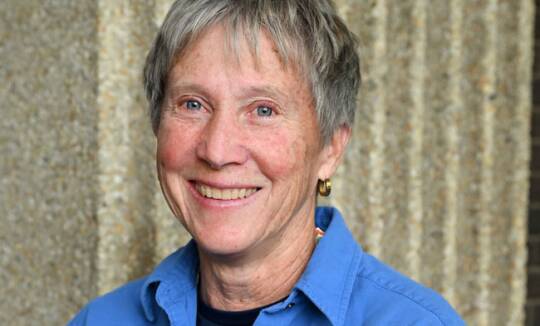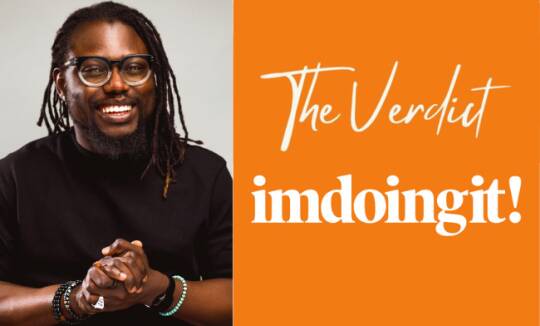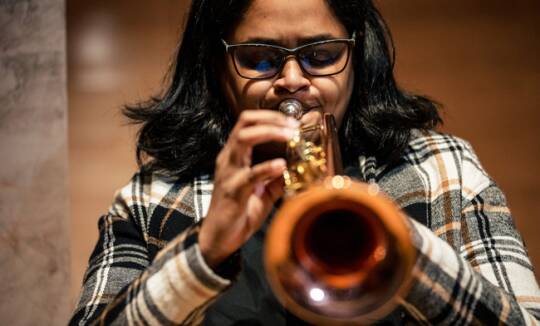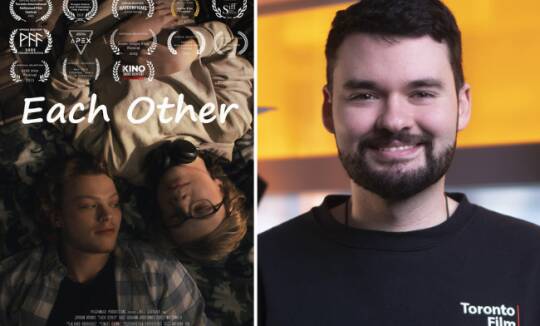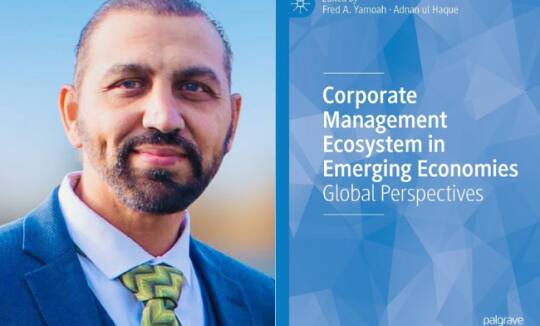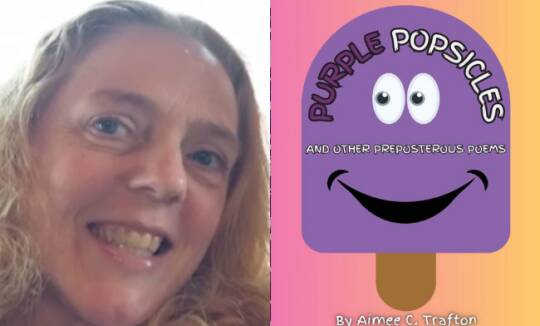Yorkville University recently caught up with Darrel Melvin to discuss the work he’s been doing with the Keep Tobacco Sacred Collaborative (KTSC) since graduating from the Master of Education in Adult Education program in 2019.
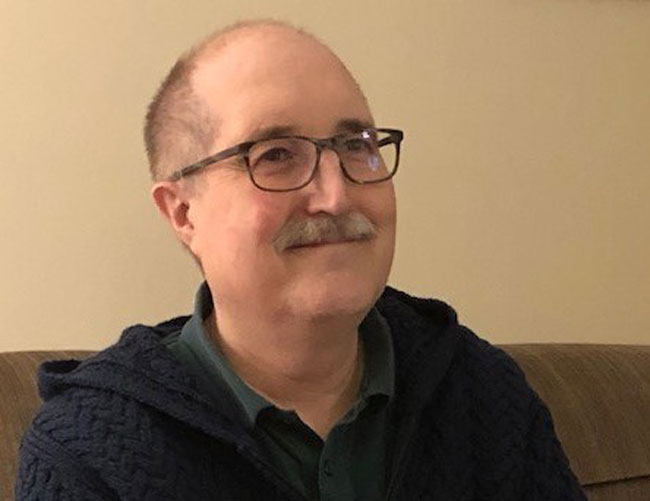
Characterizing himself as “blessed” by the interactions with First Nation Elders, Knowledge Keepers and youth, Melvin said it was his time at Yorkville that prepared him for his rewarding new career path working alongside Indigenous communities in Alberta.
“I appreciated how the faculty and curriculum of the MEd in Adult Education program wove in an understanding of Indigenous ways of knowing, approaches to research, and approaches to education, into the courses I participated in,” he said.
Melvin shared more about his work during a recent Q&A session:
1. Tell us a bit about yourself?
I am a 59-year-old, white, cis-gender male of settler heritage who has worked as a registered respiratory therapist and health educator in Alberta since 1988. I have been married to the lady who is my best friend for over 32 years and we have two young adult children. I enjoy going for walks with my wife, reading science fiction and fantasy, drawing, gardening and spending time in nature.
2. What have you been involved in since graduating from Yorkville University?
I am based with a provincial team of Alberta Health Services called the AHS Tobacco, Vape and Cannabis Reduction program. My main roles involve coordinating (commercial) tobacco cessation services and supporting health care provider training and I also have the privilege to be involved in the support our program provides to the Keep Tobacco Sacred Collaborative.
Working with Indigenous health care providers, Elders, and community members sparked a personal desire in me to support decolonizing approaches for culturally based commercial tobacco cessation and prevention programming in Indigenous communities.
Hyett et al. (2018) wrote about what it means to be a non-Indigenous health care provider/researcher as an ally to Indigenous people and communities in the development of mutually trusting, reciprocal and accountable relationships. The authors describe allyship as a continuous reflexive process where an individual makes a conscious effort to suspend one’s own worldview and who actively promotes Indigenous worldviews and knowledge. The authors went on to say that non-Indigenous individuals, when acting as allies, may mobilize individual personal rights and privilege in support of Indigenous research(ers). I reflect on the knowledge that I can aspire to be an ally to the Indigenous health care providers, Elders, youth and community members I work with; however, it will be these same individuals who will judge whether I am considered an ally. As a non-Indigenous health care provider, I believe it would be inappropriate for me to declare myself an ally.
3. What was the impetus behind the Keep Tobacco Sacred Collaborative initiative?
Tobacco use is the leading cause of preventable death and disease in Canada. The prevalence of commercial tobacco use among First Nations people is about twice as high as it is among non-Indigenous Canadians.
The initiation of commercial tobacco smoking is also earlier in Indigenous communities, with instances occurring as young as six to eight years of age, but typically beginning at age 12 and peaking at 16.
Moreover, Indigenous children are exposed to second-hand smoke in homes and cars more frequently than Canadians overall.
Commercial tobacco use among Indigenous people has become a serious public health issue that contributes to health inequities among this population.
In 2019, a representative of Health Canada indicated new funding would be coming available to First Nations peoples within the boundaries of each province and jurisdiction to address the impact of commercial tobacco in their communities through distinction-based approaches. This announcement at a conference in Alberta encouraged the development of a collaborative partnership lead by a key knowledge keeper, Elders from representative communities and support from Alberta Health Services, Action on Smoking and Health, and the Alberta Chapter of the Canadian Cancer Society.
One of the main goals of the collaborative is to be able to improve the ability of Knowledge Keepers and Elders to create cultural restoration programs to teach First Nations youth about traditional tobacco, while simultaneously de-normalizing and promoting reduced consumption of commercial tobacco use in First Nation communities.
4. How does teaching youth about sacred/traditional tobacco cultural knowledge help prevent them from using commercial tobacco? Why is it important to do so?
Traditional tobacco is a sacred plant and a gift given by the Creator to Indigenous people. It’s important to honour the role tobacco plays in many First Nations cultures. Traditional tobacco may be burned, carrying prayers to the spirit world. It’s used in medicines and has healing properties. It may be given as an offering to Mother Earth. Traditional tobacco can be given as a gift to an Elder. It’s a symbol of gratitude and respect and of the Elder’s commitment to help you, often with prayers and spiritual guidance.
Teaching First Nation youth about their culture and the traditional role of tobacco, discourages the use of commercial tobacco.
5. Talk about the importance of bringing Elders and youth together for this project and how those new connections may have helped foster closer ties between generations.
With collaborative leadership from First Nation communities in several treaty areas, this project will work to reduce the disproportionate rates of commercial tobacco use by focusing on holistic, community based and evidence-informed culturally centred interventions that will support: a) cultural connectedness and healing involving Elders and Knowledge Keepers who will share knowledge regarding traditional tobacco with youth and community members; b) support youth leadership and advocacy to implement strategies to support setting change and improve youth resiliency, education, and knowledge regarding both traditional tobacco and the harms of commercial tobacco and nicotine; c) support community setting change by shifting policy/programming to support social norm change from acceptance of commercial tobacco use toward traditional tobacco; and d) support/build the capacity of the community to alter the setting and improve knowledge and understanding of traditional tobacco which includes improved community access to traditional tobacco and spaces to support its production, reverence and use.
The First Nation Holistic models of lifelong learning are experiential and tied to land, language and community. Elders have a special role as facilitators in teaching roles, responsibilities and community culture to youth. This project seeks to restore and support this important role within communities.
6. What are some of the project activities that have been hosted so far, in terms of engagement events and meetings?
We held two Elder Engagement sessions and Two Youth engagement sessions in 2019. This was followed by a joint session with all Elders and youth representation in Edmonton early in 2020.
We developed a set of five HUTV videos collecting Elders teachings from these sessions, which are now posted on the Alberta Health Services YouTube channel and have been shared across HUTV screens in hospitals, health centres, and medical clinics around the province:
– Reconciliation is Action (Not Words)
– Youth Pride and Cultural Awareness
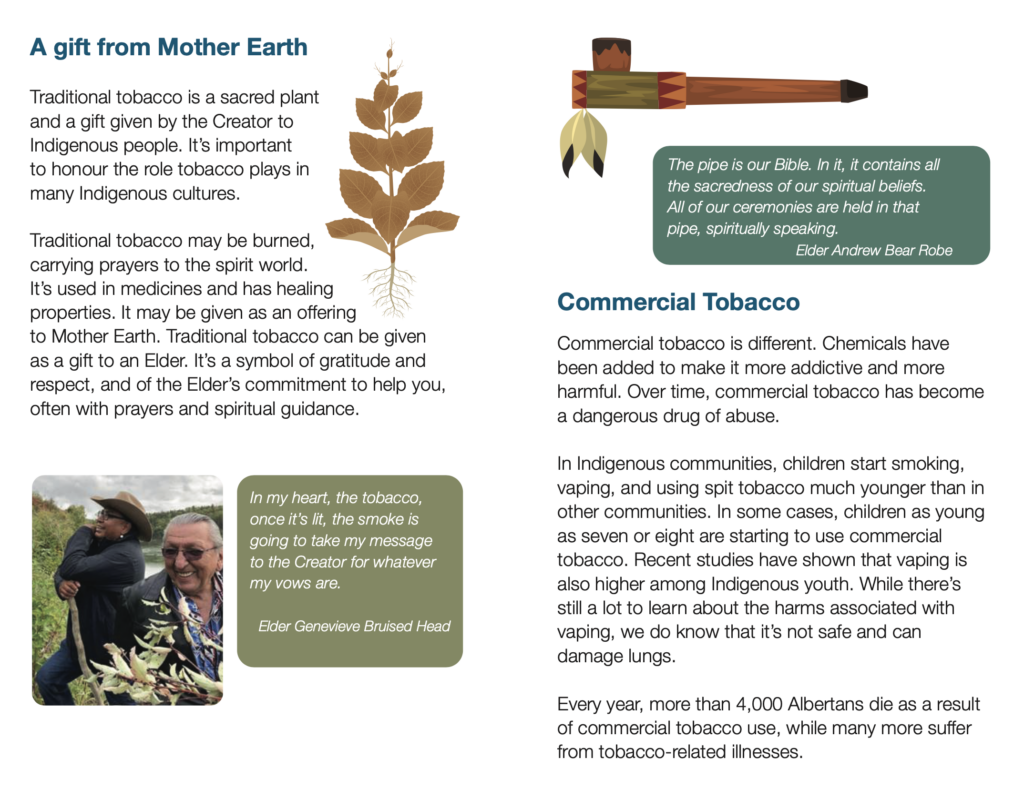
Feedback from the Elders has also been incorporated into a new resource entitled, Tobacco: A Gift from Mother Earth.
In the 2021 fiscal year, we will be working with the Métis Nation of Alberta and diverse First Nation communities on culturally based adaptations of commercial tobacco cessation programs.
We are currently exploring grant application options through Indigenous Services Canada (for First Nations and Inuit) and the Public Health Agency of Canada, which will allow us to scale up collaborative initiatives to provide equitable support to all First Nation communities within the boundaries of Alberta who wish to do this work.
7. How has the project pivoted in order to accommodate for social distancing measures during the COVID-19 pandemic?
The Elder and Youth Engagement sessions conducted prior to the pandemic had representation from First Nation communities from the southern border of Alberta up to just north of Edmonton. Once effective vaccination rates within Alberta allow physical distancing guidelines to be reduced, we are looking forward to holding engagement sessions with First Nation communities in Northern Alberta.
8. What is the ultimate goal of the Keep Tobacco Sacred initiative?
We plan to scale up to pan-treaty initiatives extending into BC, Saskatchewan and part of Manitoba.
The Keep Tobacco Sacred Collaboration is focused on preventing commercial tobacco use amongst First Nations youth in Alberta, with the ultimate goal of supporting community-driven, culturally appropriate interventions for the improvement of overall wellness within communities across territories.
While the restoration of knowledge through Elder/youth connection is imperative to supporting the use of tobacco as a sacred plant and not as a drug of abuse, commercial tobacco reduction is only one of many health indictors this community empowerment initiative will address. Addiction, death by suicide, and family violence are just a few of the areas inter-generational connection and cultural reclamation will improve.
The Keep Tobacco Sacred Collaborative focuses on work with First Nation communities, as the federal funding sources we were exploring separate grants for First Nation and Métis people. The work done by the AHS tobacco, vaping and cannabis program to support Indigenous people is inclusive of First Nation, Métis, and Inuit peoples. In Alberta, the Inuit population is primarily urban based in Edmonton.

